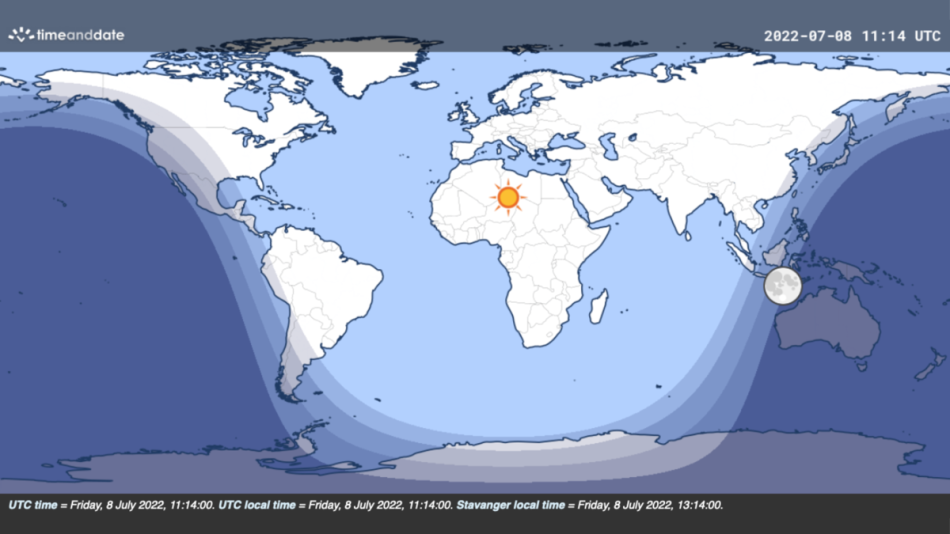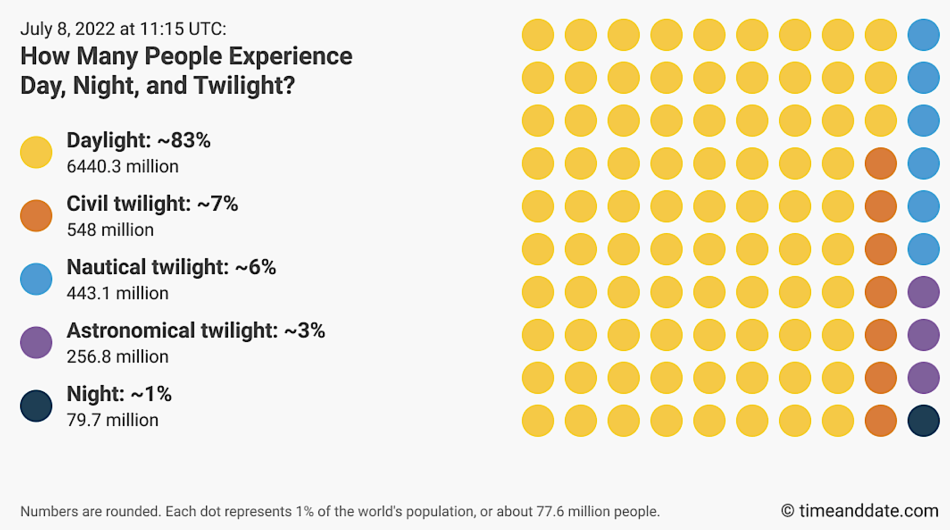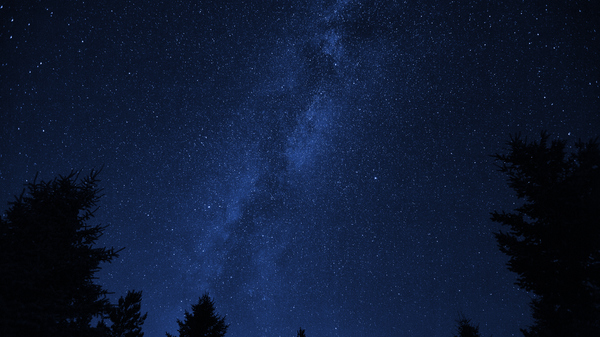Fact Check: 99% of the world’s population gets sunlight at the same moment, July 8 2023
[Sorry. At time of posting this story, the event has passed here in Cayman]
By Konstantin Bikos. From timeanddate
A fascinating claim is circulating the internet: that there’s a moment each year when 99% of the world’s population gets sunlight. Is it true?
Read our 2023 update to this story: July 8 isn’t the only date

Event in UTC on Friday, 8 July 2022, 11:15:00
UTC is Coordinated Universal Time, GMT is Greenwich Mean Time.
Great Britain/United Kingdom is one hour ahead of UTC during summer.
As July rolls around, our number crunchers thought it was worth fact-checking a July-related claim that has been making the rounds on the internet lately.
In the original post, Reddit user GiddySwine presents a still image of our Day and Night World Map, claiming that 99% of the world’s population is between dawn and dusk on July 8 at 11:15 UTC.
A more widely circulated version claims that 99% of the population gets daylight at that moment.
Covers the World’s Most Populated Areas
A brief look at our Day and Night World Mapgives some initial support to the claims (see image above). Nearly all of the world’s most populated areas receive some sunlight at the time in question. Among them are North America, South America, Europe, Africa, and most of Asia.
Australia, New Zealand, parts of Southeast Asia, and Antarctica are the only larger landmasses on the night side of Earth.
The Day and Night World Map uses different shadings for day, night, and the three stages of twilight:
- The lightest shading represents daytime when the Sun is above the horizon.
- The darkest shading is nighttimewhen the Sun is below the horizon, and there’s no twilight.
- The shadings between day and night are the three stages of twilight when the Sun is below the horizon, but there’s still some indirect sunlight.
7.7 Billion People Get Some Degree of Sunlight
When we run the detailed numbers through our computer, we also find some support for the claim.
Combining timeanddate’s Sun data with 2022 population data from the Center for International Earth Science Information Network at Columbia University, we found that it’s nighttime for just under 80 million people on July 8 at 11:15 UTC.
That leaves about 7.7 billion people—roughly 99% of us—on the side of the planet illuminated by the Sun.
Over 6.4 billion of them are in the daytime, while more than 1.2 billion people experience twilight.

So, with 83% of us getting direct sunlight and another 16% getting indirect sunlight, the claims are, in one way, correct. And, before we go any further, let us say that this alone is a fascinating fact and a great find!
That said, there’s a hitch: a few hundred million people on the supposedly sunlit side of Earth will think it’s night.
Pitch-Black Twilight Sky
This is especially true for those who reside on the outermost edge of the twilight zones, within the darkest twilight phase called astronomical twilight. Here, the Sun is 12-18 degrees below the horizon. At that angle, the indirect sunlight becomes so thin that it is usually indiscernible to the naked eye.
The trace amounts of light in the otherwise pitch-black sky are of concern only in very particular contexts. For example, it can hinder astronomers from observing the faintest celestial objects—hence the name of this twilight phase.

Hundreds of Millions Will Think It’s Night
So, 256.8 million people, about 3% of the world’s population, are so far behind the curve that no sunlight is visible.
Moreover, many people in the slightly brighter nautical twilight zone will fail to notice any daylight. Especially in urban areas, whose residents make up a majority of the total population numbers, light pollution can blend out the faint glow of the Sun, which is 6-12 degrees below the horizon at that point.
Claim Confirmed, But…
So, the claim is technically true if you count all twilight areas, no matter how dimly lit.
But the percentage of the population actually perceiving sunlight is a bit lower. Discounting all of the people in the astronomical twilight zone and half of the population experiencing nautical twilight, we get 7204.9 million people, or about 93% of the world’s population.
It’s still a very high number. But the wording of the more recent versions of the post, claiming that 99% of the population will “experience daylight,” is somewhat misleading.
For much more on this story go to: TIMEANDDATE.COM





